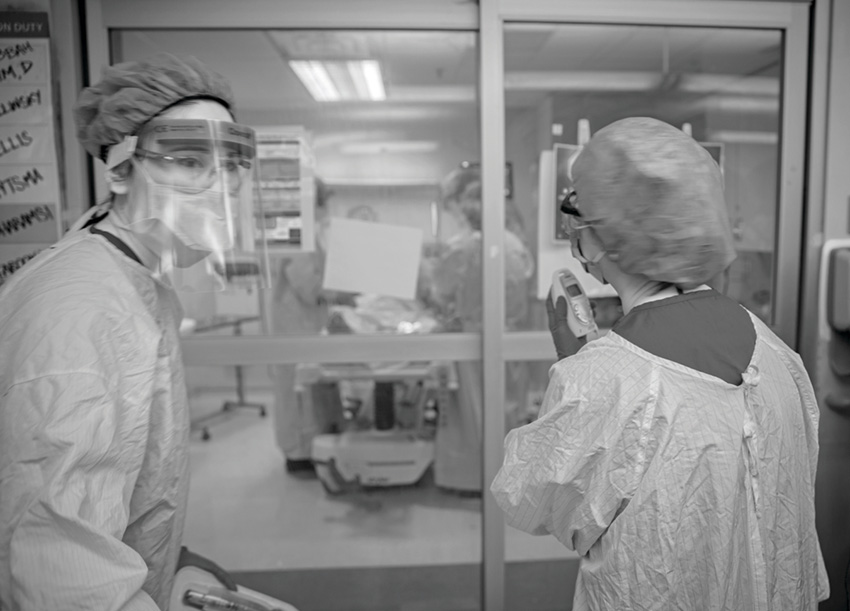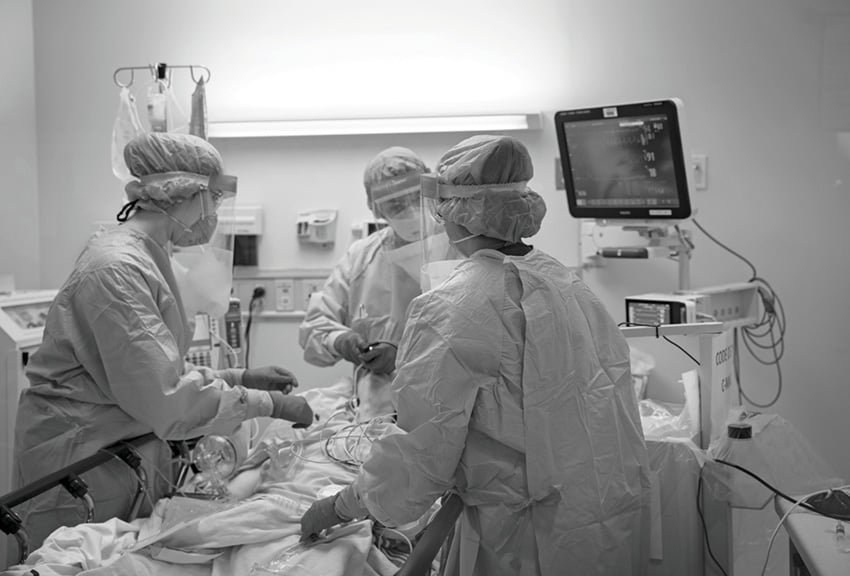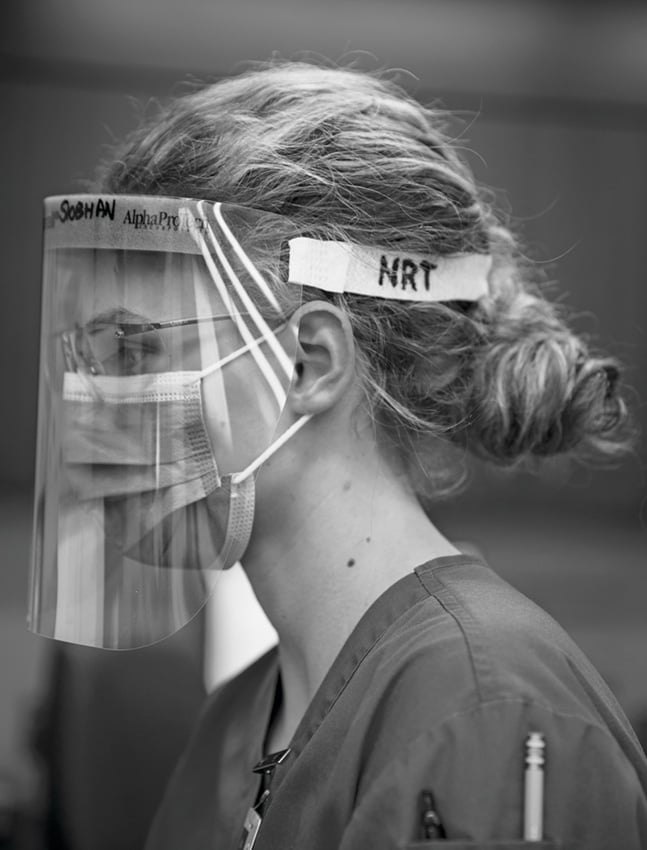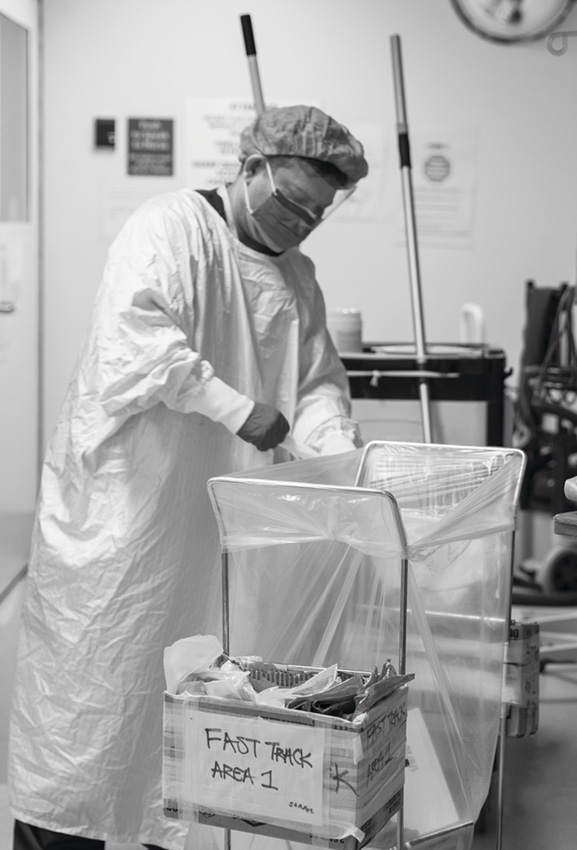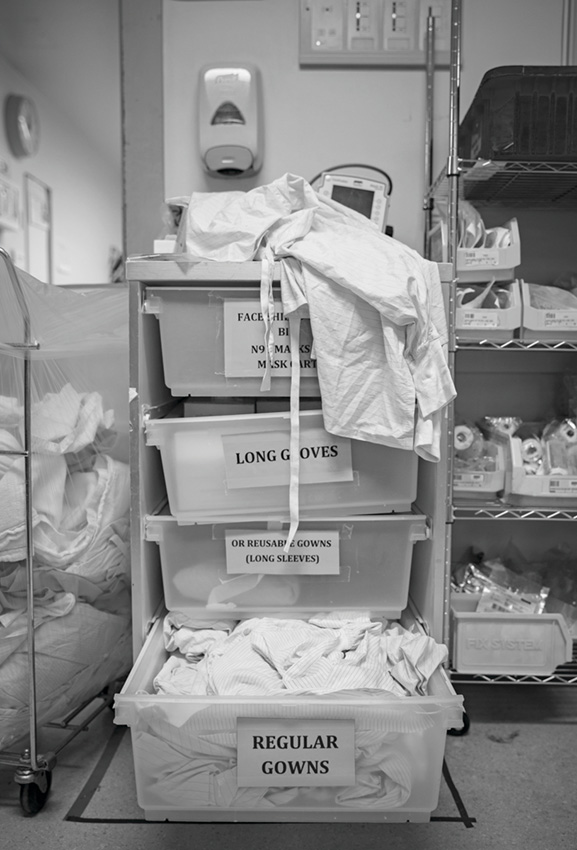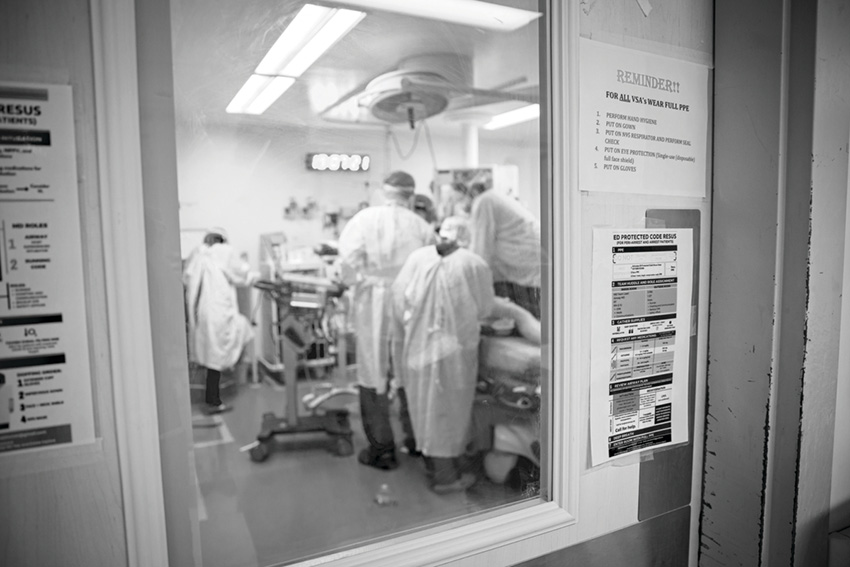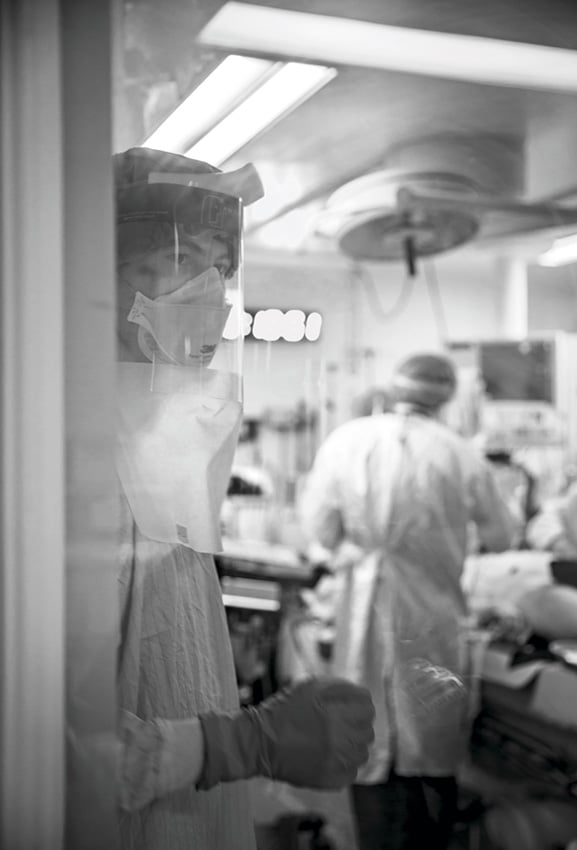‘I saw fleeting moments no one remembers’: One ER doctor’s photos from the coronavirus frontlines
From fear to compassion to moments of humanity—what the COVID-19 pandemic looks like through the lens of emergency room doctor Dawn Lim
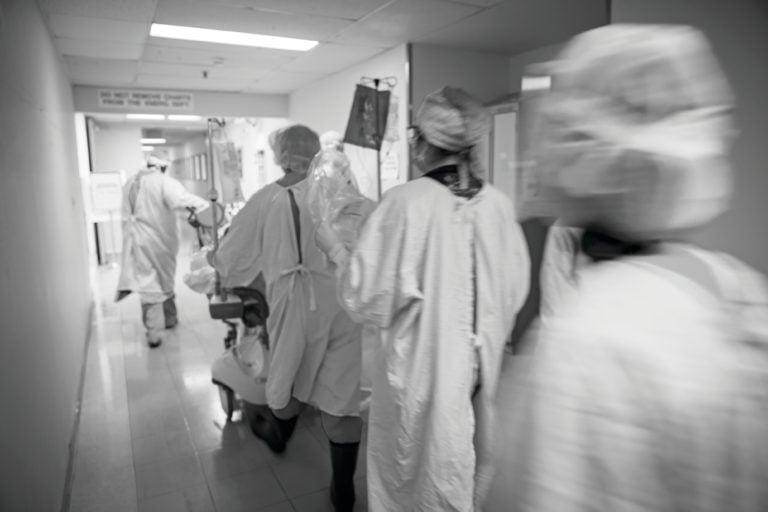
A patient with COVID-19 is rushed to the intensive care unit after being stabilized and having a breathing tube inserted (Dawn Lim)
Share
Vulnerability, compassion and gratitude—I think of these words as I take my last unhindered breaths. I’m about to start another eight-hour shift in the emergency department at the University Health Network (UHN) in Toronto. I press down on the nose bridge of my face mask: if it’s too tight, I get a tension headache; too loose and my goggles fog up. I put on the face shield that muffles my voice until I’m forced to shout in order to be heard. The connection I’ve built with my patients—what I love most about being an emergency doctor—is now broken by a two-metre distance. The coronavirus changed the country’s hospitals overnight.
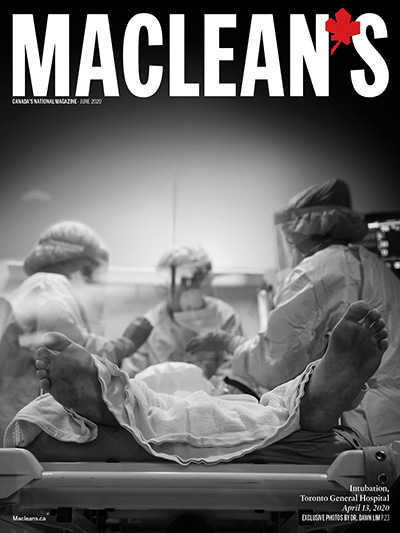
One of my emergency medicine colleagues, who was on the front lines during the SARS outbreak, told me that no one asked her team how they felt afterwards. As of early May, some 2,700 health-care workers have been infected with COVID-19 in Ontario alone. We must give them a chance to tell their stories.
Every day, my colleagues and I care for others, yet we hesitate to ask for help. Throughout this pandemic, I’ve worried about catching the virus and spreading it to my two children. At work, I second-guess whether the person who displayed mild symptoms should have been sent home. I’m terrified about not being able to act quickly enough when I see patients struggling to breathe. Documenting the day-to-day pulse of the UHN, through photos, has provided my only sense of control.
I saw fleeting moments no one remembers: a nurse tucking in another nurse’s hair before entering a resuscitation room, our environmental services staff humming songs while flipping over beds and wiping them clean, the fearful gaze of a patient about to be intubated. Though my colleagues have been wearing masks for six weeks, I’ve learned to recognize them by the creases in their eyes when they smile and by the way they laugh. We haven’t lost that aspect of our humanity.
